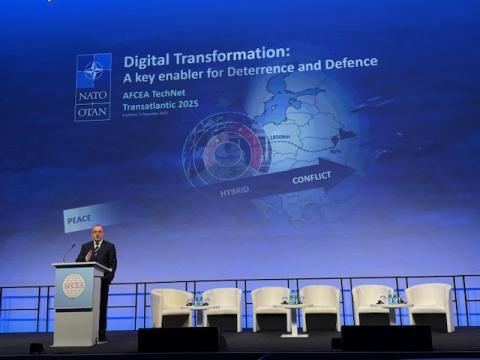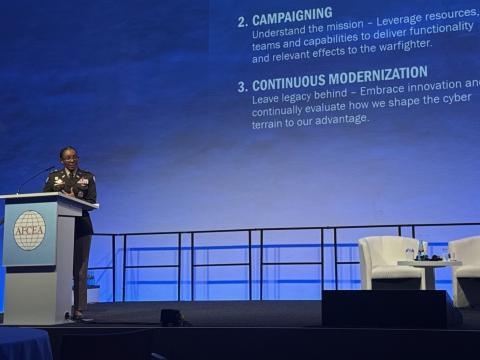Powering the Cyber Force Through Data: Building a Ready Cyber Workforce With Precision Analytics
A ready and resilient cyber force is paramount for the Department of Defense (DOD) in today’s complex and ever-evolving digital landscape. Meeting this challenge requires a data-driven and technology-adept cyber workforce. Managing and optimizing this critical workforce demands an innovative talent management and workforce readiness approach. The DOD is leveraging the power of data analytics to shape and maintain a mission-ready cyber force. The use of analytics facilitates how the DOD understands, develops and deploys its cyber talent. Integrating data analytics allows a more prescriptive approach, ensuring that the DOD cyber force is ready and capable of meeting any cyber contingency.
The DOD Cyber Workforce: A Foundation for National Security
The DOD 8140 policy series standardizes how the department identifies, qualifies and manages the Department of Defense cyber workforce. At its foundation is the DOD Cyber Workforce Framework (DCWF). The DCWF is the backbone of the nation’s cyber mission, responsible for building, securing, operating, defending and protecting the DOD and U.S. cyberspace resources. This workforce comprises military and civilian personnel who execute the department’s cyber mission. The DOD CIO provides the authoritative framework, establishing a common lexicon to describe the work performed by these vital personnel. The DCWF includes 73 work roles that expand the full operational scope of the department’s cyber mission. There are seven DCWF elements: cybersecurity, information technology (IT), cyber intel, cyber effects, enablers, data/artificial intelligence (AI) and software engineering. The DOD 8140 Cyberspace Workforce Qualification Program is an agile program that ensures the lethality and effectiveness of our cyber workforce through service-validated training, education, certification and experience coupled with continual professional development requirements. Over 300 DOD 8140 foundational qualification options are available to improve resiliency against cyber attacks and win in the cyber battlespace, ensuring the DCWF is ready to meet the mission of the DOD. The DOD cyberspace workforce encompasses roughly 175,000 military and civilian personnel.
The Power of Work Role-Centric Data
A key element of the DOD’s approach is focusing on the cyber work role as a critical data entity. By using work roles as the central organizing principle for data, the DOD gains a more granular and actionable understanding of its cyber workforce. This approach enables holistic work role coding of the department’s cyber workforce as constructed under the DCWF. This coding allows for a deeper understanding of the skills and expertise within the cyber workforce. By looking beyond military and civilian occupational series, the DOD can identify specific skill gaps and shortages by specific work role. The DCWF enables a holistic view of the cyber workforce, offering fidelity by work role for targeted recruitment, retention and development support. This work-role-centric approach allows for better insight into skills, competencies and training needs of the cyber work being performed. DCWF cyber work roles are coded into the service-authoritative manpower/personnel systems. The initial coding of civilian and military systems was a five-year effort. Services are constantly updating cyber work role coding of the workforce. The DOD ingests data from all service manpower/personnel systems to support the cyber workforce effort. Using the common data model centered on the cyber work role, the DOD CIO generates over 50-plus unique key performance indicators (KPI) to include vacancy rates, turnover rates, and time to hire, utilizing predictive analytic methods in near real time. The DOD CIO leverages Advana, which provides enterprise-wide cyber workforce analytics that integrates with service data systems and informs accurate, real-time decisions. The DOD CIO Advana Cyber Health and Readiness Report offers a vast spectrum of visualizations, from high-level executive dashboards to deep-dive analytic tools and specific views for readiness reporting.
The power of work role-centric data provides three unique advantages:
- Unlock Deeper Insights: Work role-centric data provides a fidelity beyond the occupational series, focusing on the work needed to meet the mission.
- Generate Comprehensive Metrics: Utilizing the cyber work role as a unified data standard provides over 50 unique KPIs, integrating data from authoritative service systems for a complete cyber force picture.
- Power Data-Driven Decisions: Data-driven decisions with the support of insightful analytics and enterprise visualizations.
DOD cyber health and readiness visualizations facilitate DOD senior leader decisions, providing a holistic view of the workforce at scale, comprehensive views of the cyber workforce, and detailed data points for decision support. The DOD Cyber Workforce Management Board (CWMB), the DOD CIO and service CIO decision forum, utilizes DCWF data visualized in Advana to provide the current state of the force and decision support for expanding the DCWF. The CWMB also uses this data for decisions supporting tailored incentive programs, training and qualification, and work role incentive usage and spending analysis.
Next-Gen Readiness: Analytics at the Forefront
The DOD is actively leveraging advanced analytics to build and maintain a mission-ready cyber force at speed and scale. A key milestone occurred in February 2025 when the DOD launched its first readiness report using the DCWF. This initial report tracked the foundational qualifications of the DCWF’s cybersecurity element, representing approximately 10% of the DOD’s total cyber force and serving as the starting point for these new readiness analytics. It visualized the foundational qualification status across the department and within each service. The DOD CIO plans a significant expansion by February 2026, extending the readiness reporting to include the IT, enablers and cyber effects elements alongside cybersecurity. This comprehensive approach will cover roughly 90% of DCWF capabilities, assessing foundational readiness across four of the seven DCWF elements. The inaugural report demonstrated how education, training and certification qualifications contribute to readiness, initially focusing on cybersecurity roles. In subsequent years, the goal is to visualize full DCWF readiness, incorporating mission-specific residential (on-the-job) readiness for all elements and tracking continuous professional development. Crucially, employing analytics allows the DOD to monitor current workforce readiness and predict future needs and proactively address potential shortfalls by analyzing data on training completion, skill proficiency and emerging cyber threats, ensuring the force remains prepared for future challenges.
The Future of Cyber Workforce Analytics
By embracing data-driven insights, the DOD is paving the way for a more agile, responsive and effective cyber force. As the digital landscape continues to evolve, leveraging data for informed decision-making will be critical to maintaining a competitive advantage in the cyber domain. The DOD is committed to exploring future applications of analytics and plans to finalize data/AI and software engineering work role coding and expand the DCWF to include spectrum and electronic warfare. Furthermore, the department aims to code contractors and implement industry salary benchmarking. These initiatives will enable total force analytics, workforce readiness expansion and data-driven training support decisions. Ultimately, the goal is to have a qualified workforce to defeat the adversary. This goal hinges on the integration of work role analytics to provide real-time insights on the state of the cyber force. By leveraging analytics, the DOD can create a cyber force that is highly skilled, adaptable and resilient.
Closing
In conclusion, this article underscores the synergistic strengths of the DOD 8140 Policy Series, its foundational DCWF and persistent analytics. By leveraging adaptable, mission-focused cyber work roles, the DOD CIO aggregates crucial data from authoritative systems into Advana, the department’s enterprise analytics platform. This integration powers the generation of comprehensive metrics and tailored visualizations, enabling truly data-driven decisions for senior leadership and command-level action officers. Ultimately, this robust analytic effort is progressing beyond merely identifying the workforce to actively assessing its qualifications, strategically positioning the DOD to achieve and maintain full readiness for its critical cyber missions.
As the Department of Defense (DOD) Cyber Workforce Data and Analytics Program lead, Alfredo Rodriguez III shapes and implements enterprise cyber workforce data analytics strategies for the DOD chief information officer. He is a former Army lieutenant colonel with extensive command and staff experience in the Signal Corps. Rodriguez holds master’s degrees in national security studies and management, has published widely and is a recipient of the DON IT Excellence Award for Cyber Workforce Innovation.






Comments